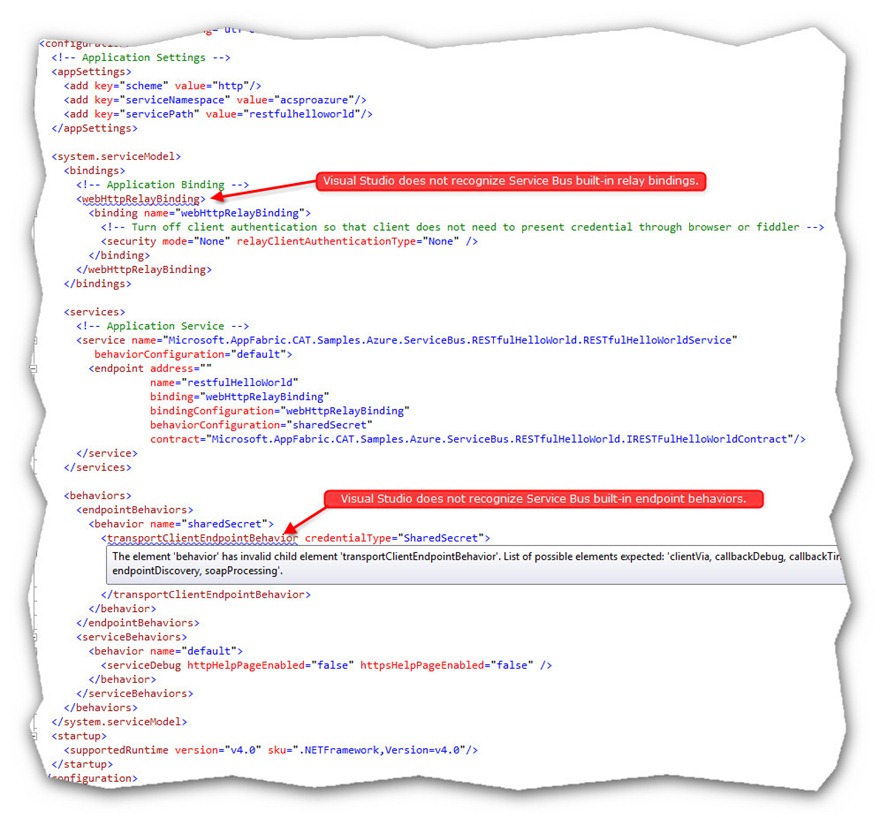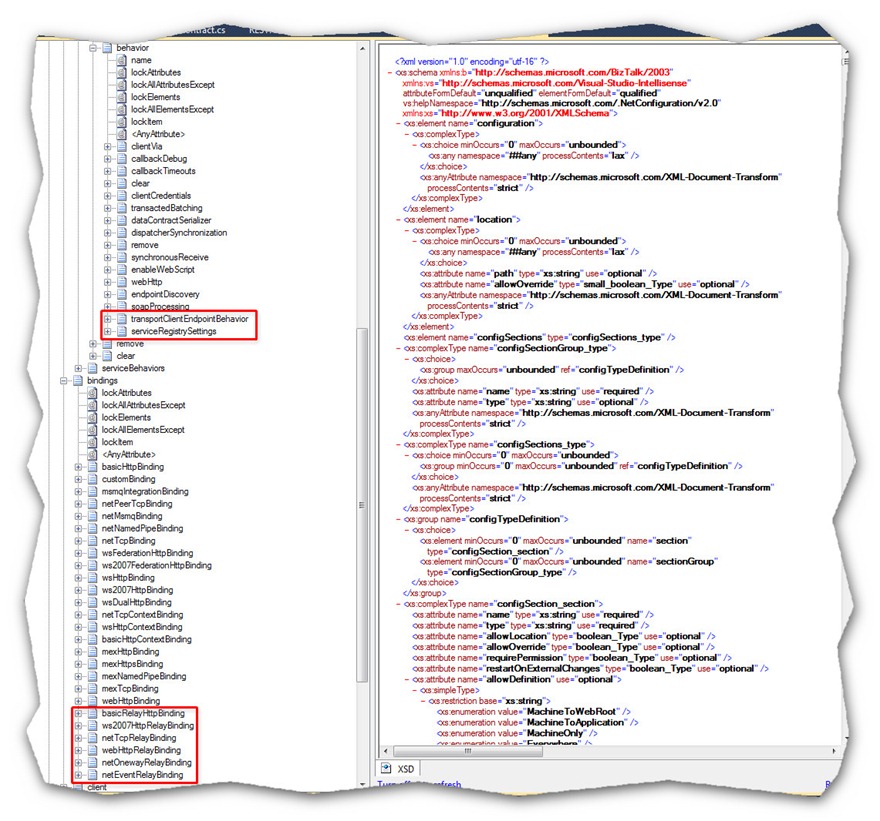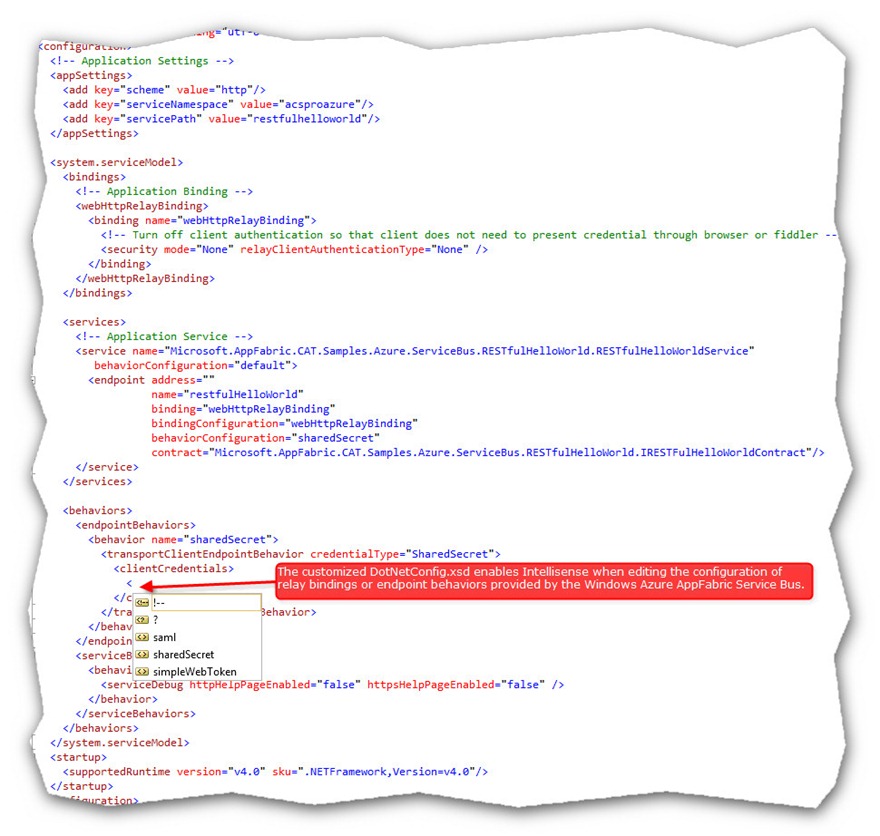Intellisense when editing Service Bus configuration files? Yes please!
The problem
The setup of Windows Azure AppFabric SDK adds the elements reported in the table below to the configuration contained in the the machine.config files under the following folders:
- %windir%\Microsoft.NET\Framework\v4.0.30319\Config
- %windir%\Microsoft.NET\Framework64\v4.0.30319\Config
|
However, configuring WCF extensions in the machine.config is not sufficient to enable Intellisense on the relay bindings and endpoint behaviors contained in the AppFabric Service Bus Class Library when you edit the configuration file (web.config, app.config) of an application that exposes or consume services in the cloud. To scope the problem, let’s assume for a moment that you create an on-premises or cloud application that exposes a service via the AppFabric Service Bus. Your service will surely expose one or more endpoints based on one of the relay bindings supplied out-of the-box by the AppFabric Service Bus Class Library. However, when you try to use Visual Studio to define the configuration of any relay bindings and endpoint behaviors provided by the Service Bus, IntelliSense is unable to recognize these elements. For example, the picture below shows what happens when you try to define the configuration for the WebHttpRelayBinding and the TransportClientEndpointBehavior. In a nutshell, you cannot rely on IntelliSense to compose and validate your configuration file using a syntax-driven approach. Moreover, Visual Studio raises a warning for each unrecognized element within your configuration. Now, I don’t know about you, but when I compile my projects I cross my fingers until the build process completes.When I see the Rebuild All succeeded message on the left-bottom corner of Visual Studio I heave a sigh of relief, but in order to attain the maximum level of happiness, my Errors and Warnings lists must be empty!
The solution
Now, the XSD used by Visual Studio IntelliSense is stored under "%ProgramFiles(x86)%\Microsoft Visual Studio 10.0\Xml\Schemas\DotNetConfig.xsd". Hence, I decided to extend this XML schema file to add Intellisense for the bindings and behaviors provided by AppFabric Service Bus. BizTalk Editor came in handy for this purpose because I could use its cut and paste capabilities to accelerate the task. I created an entry for each relay binding or endpoint behavior defined within the AppFabric Service Bus Class Library as you can see in the image below:
After customizing the DotNetConfig.xsd, IntelliSense works as expected as shown in the following picture.
Conclusions
Utilizing IntelliSense rather than cut and paste or memorization makes it more likely I will enter settings correctly and also gets rid of all of those unsightly warnings! Here you can download the Visual Studio 2010 DotNetConfig.xsd customized for the Azure Service Bus. Please drop me a line if you find any problems or improvements to suggest. Thanks!
Review by: Christian Martinez and Tim Wieman.


